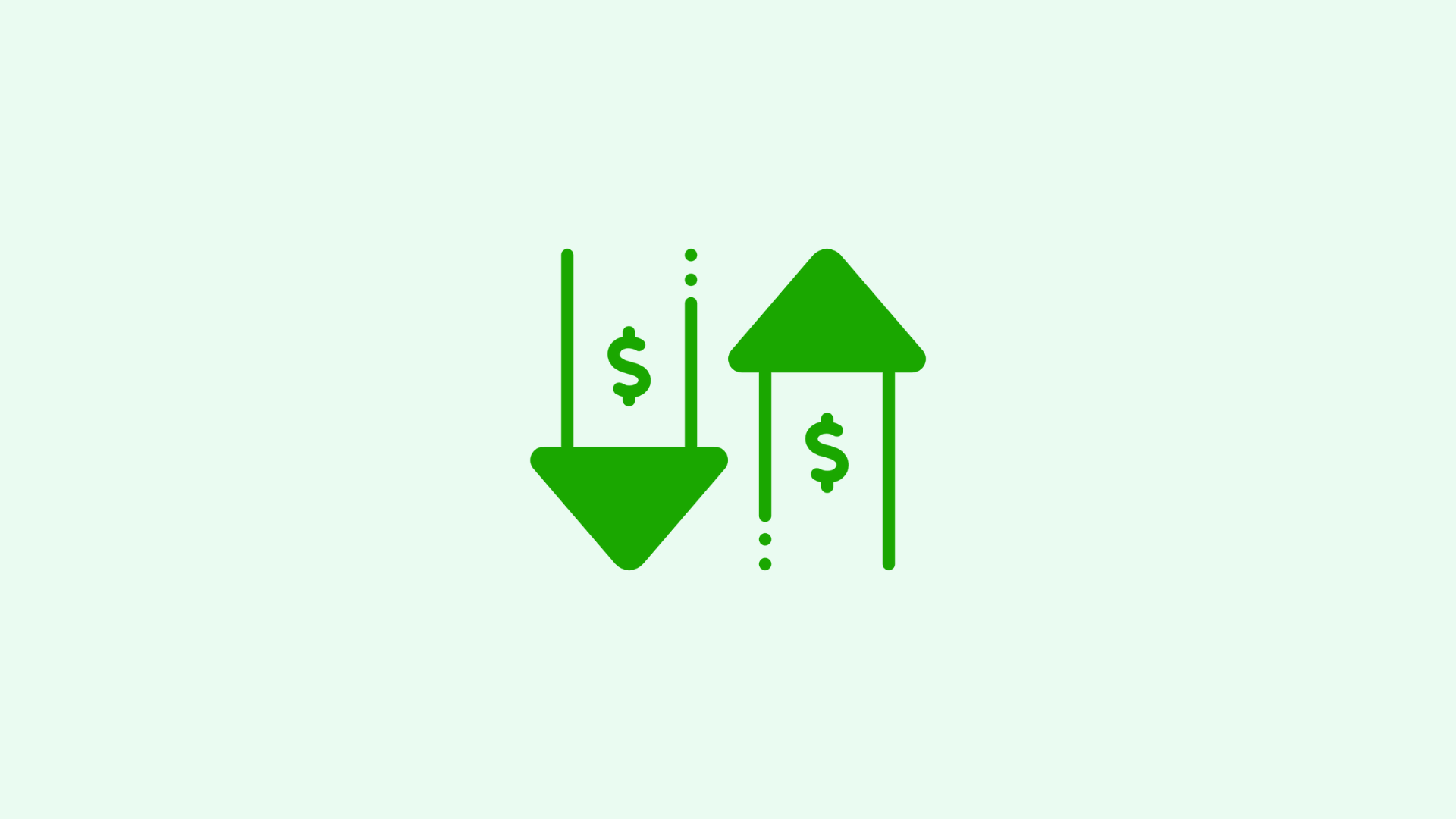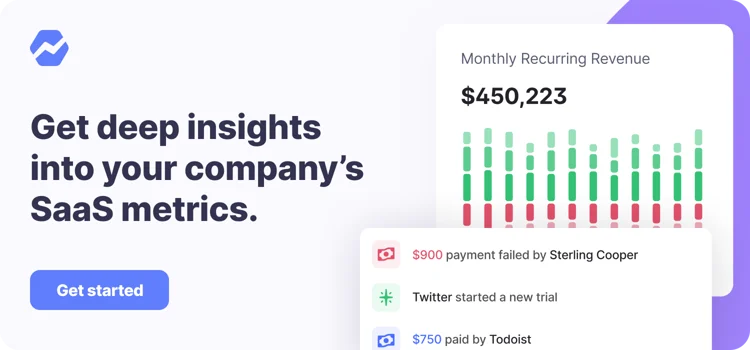Table of Contents
More Founders Journey Articles

Penetration pricing is one of the many pricing strategies employed by companies in an attempt to increase their revenue and/or profit.
Penetration pricing is the strategy of offering extremely low prices when entering a market to entice customers to try a product or service. It works best in very crowded markets where it is hard to attract customers away from more established brands.
Penetration pricing is a particularly effective option when it is difficult to show a client your higher quality or special value without them trying your service. This is especially true when demand is elastic (i.e., it is very sensitive to the price) and economies of scale are very apparent (i.e., the marginal cost decreases as the size of the firm increases).
If that is confusing or too theoretical, don’t fret, as we will go through what that means with some graphs and an example below. We’ll also walk you through the pros and cons of using a penetration price strategy, as well as compare it to its mirror strategy, price skimming.
Whatever pricing strategy you choose, use Baremetrics to monitor your sales data.
Baremetrics makes it easy to collect and visualize all of your sales data; including your MRR, ARR, LTV, and so much more.
Integrating this innovative tool will make evaluating your pricing strategy seamless for SaaS companies, and you can start a free trial today.
Understanding penetration pricing
Penetration pricing is used to quickly gain market share, especially in a crowded market. It is often combined with certain psychological pricing strategies to give the impression that the prices will go up soon, thus prompting potential customers to hastily make a purchase for fear of missing out.
While the system is an effective way to get customers to sign up initially, if your service doesn’t meet the standards of the market, don’t expect customers to stick around as the price goes up.
The major objectives of penetration pricing can be summarized as follows:
- Introduce consumers to a new product or service
- Hook new users on your service
- Challenge the current market leaders
- Quickly establish a market share
- Establish brand loyalty with a new customer base
- Get customers to abandon competitors in exchange for your service
- Drive up the sales volume to benefit from economies of scale
- Push competitors out of a market
All of these goals are achieved through offering extremely low prices for an introductory period.
Indeed, the margins can be slim, zero, or even negative during a penetration pricing campaign, which means that you could be burning profit during the campaign or experiencing a negative cash flow. This is an unsustainable position in the long run, which is why penetration pricing, as well as the price skimming technique discussed next, is always a short-term strategy.
Penetration pricing vs. price skimming
Price skimming and penetration pricing are essentially the opposite strategies. Whereas price skimming uses initially high prices to earn revenue, penetration pricing uses initially low prices to get more sales.
While price skimming is best used with unique or new products, penetration is best used when the market is highly competitive and customers are quite loyal to their brand of choice.
Some caution and discretion is required for both, however. While penetration pricing will leave you earning less revenue per client when used for too long, price skimming will start to attract competitors that feel they can beat your prices if given the chance.
Situations where penetration pricing is effective
Penetration pricing is best used under very specific market conditions.
First, when there is very little distinction between competitors’ products and your own, it is difficult to differentiate in any way other than price. Since customers usually exhibit some level of brand loyalty, unless you (temporarily) have lower prices than the competition, it will be difficult to gain a market share.
Second, when demand is price elastic, which means that the level of demand heavily depends on the price, it is easier to entice consumers away from their current brand of choice, and it is more likely that a penetration pricing strategy will succeed.
Finally, when the total cost structure of your company signals that you’ll have positive economies of scale (i.e., the marginal cost of your product will decrease as the level of production increases) then as your company gains more customers, the price you can offer sustainably will decrease. Moreover, a large market share will be a fundamental requirement of long-term success.
Penetration Pricing Examples
You’ve just built a great SaaS platform in a competitive market. The R&D costs were very high, but the cost to maintain and host the service per client is very low. Because of this, your marginal cost decreases rapidly from $15 to $10, if you can increase the number of subscribers from Q1 to Q2.
The competitor currently prices their product at $30, and you think it will take a price of $12 to initially get customers to try your service. Let’s look at this graphically:

You know that, so long as you can work your way to a market share that garners you a sales volume of Q2 that you will be profitable in the long run.
Once you reach Q2, your plan is to slowly raise prices until they are in line with the competition.
If you’re looking for a smarter way to measure the effect of a new pricing strategy, get in touch or sign up for the Baremetrics free trial today.
Have a look at the demo to see how Baremetrics can show you the results of your marketing decisions.
The pros and cons of market penetration pricing
Penetration pricing is a great way to gain market share quickly, but if you do not have a lot of cash on hand then you might find yourself insolvent before you become established in the market.
While you may be able to garner a big market share, there is no guarantee that that market share will want to remain loyal to you as you bring your prices in line with market norms.
Let’s look at some of the other advantages and disadvantages of penetration pricing.
The advantages of penetration pricing
The following are some of the advantages of penetration pricing.
- High adoption and diffusion: A good penetration pricing campaign will both get your company used by many customers quickly and make it well known by the whole market.
- Market dominance: If you have the cash reserves for a long, deep penetration pricing campaign, it can catch the competition off-guard. While they are trying to react to your low prices, you can focus on building market share. In the best cases, you drive the competition out of the market and create a monopoly.
- Economies of scale: When you have a cost structure amenable to economies of scale, then penetration pricing is a great way to increase your volume to reduce the unit cost.
- Increased goodwill: Even if the low price is only temporary, the perceived value can make customers happy enough to be brand ambassadors to their friends and colleagues. This can generate great word of mouth.
The disadvantages of penetration pricing
The following are some of the disadvantages of penetration pricing.
- Pricing expectation: The temporary low prices can become a long-term expectation of the market. The customers may permanently view your company as a “bargain brand” and be unwilling to stick with you when your prices go up.
- Low customer loyalty: The types of customers willing to switch brands for a discount are not that loyal and will probably abandon you for the next discount campaign brought by your competitors.
- Price war: If your competitors also have deep pockets and are willing to fight for the market, then you might find yourself in a price war where nobody wins.
- Inefficient long-term strategy: Penetration pricing is always going to be a short-term strategy, and you will still need to come up with a long-term one eventually.
- Potential race to the bottom: If your penetration prices lead to retaliatory low prices, then the whole market might reorient towards cheap prices but low quality, and it is the clients who will suffer.
Summary
While penetration pricing can get you some quick market share, there is no guarantee that you can keep that share once your prices go up. In addition, if your marketing strategy isn’t successful, then your low prices may need to stick around longer than you can afford to offer them.
Ultimately, penetration pricing is a great short-term strategy, but it might be better to entice potential clients into longer contracts with these low prices so that you have a longer time to convince them of the value your services bring to their companies before they decide to renew at the market rate.
Baremetrics is the obvious choice for SaaS businesses seeking to better track their revenue while making major pricing strategy changes.
If you’re looking for a smarter way to approach your SaaS business’s revenue performance, get in touch or sign up for the Baremetrics free trial today.
Marketing channels are only as good as their results. Have a look at the demo to see which marketing and business insights Baremetrics can unlock for you.
FAQ's
-
How does a company know when it’s time to shift from penetration pricing?
A company decides to shift away from a penetration pricing strategy once it has achieved its objectives, such as gaining a significant market share, establishing brand recognition, or discouraging competitors. This transition should ideally be gradual and timed to coincide with increased perceived value or brand loyalty among customers. The new pricing strategy would then be aligned with the company’s long-term objectives, whether that is maximizing profits, stabilizing prices, or something else. -
What are the risks of using a penetration pricing strategy, and how can they be mitigated?
There are several potential downsides to penetration pricing. One risk is that it can lead to an initial loss of profit due to the low price, so it requires deep pockets and good budgeting until market penetration is achieved. Also, if not executed properly, consumers may associate the low price with low quality. Moreover, it could potentially ignite a price war with competitors. Mitigating these risks involves careful market research, clear communication of product value, and strategic financial planning. -
What are some use cases of penetration pricing?
A classic example of a company using a penetration pricing strategy is Netflix. When Netflix first started offering their streaming service, they set the price significantly lower than that of traditional cable services. This low pricing helped them attract a large customer base. Over time, as their customer base grew and became more established, Netflix gradually increased their prices. The result was a rapid increase in market share, a loyal customer base, and significant revenue growth. -
What is the main objective of implementing a penetration pricing strategy?
The main objective of implementing a penetration pricing strategy is to quickly gain market share by setting a relatively low initial entry price, attracting a large number of consumers and aiming for a high volume of sales. This strategy is typically used when a new product is launched or when entering a new market. The low price can help discourage competition and establish a strong presence in the market early on. -
How does penetration pricing influence market demand and consumer behavior?
Penetration pricing can significantly influence consumer behavior by attracting cost-sensitive buyers and encouraging them to try the product. As the price is lower than the competitors’, it can stimulate market demand, particularly if the product is elastic. However, once consumers perceive the product’s value, a degree of brand loyalty can develop, enabling the firm to gradually increase prices without significantly impacting demand.





